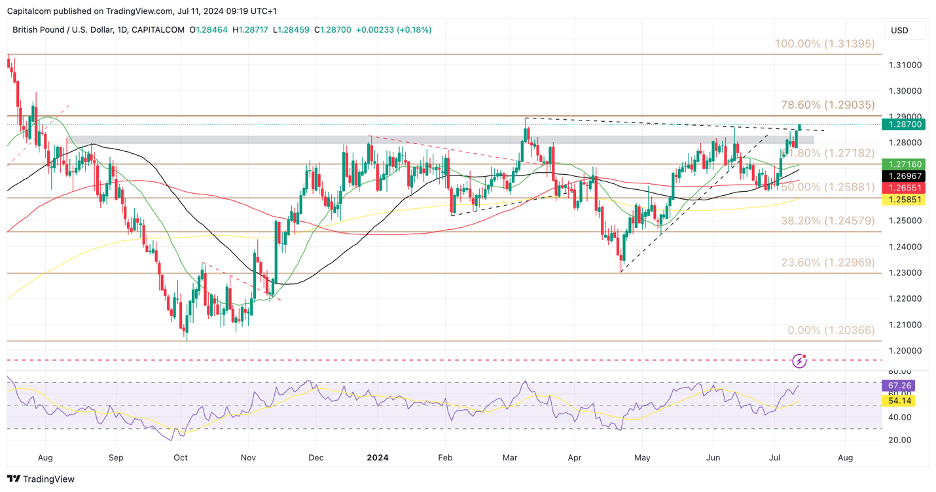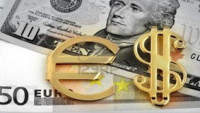The British Pound has maintained its bullish bias since the UK election build-up. The fact that the election seemed so easy and straightforward has given investors a vote of confidence in UK assets, especially at a time when there is quite a bit of political instability worldwide. That’s not to say that the new Labour government will not face challenges up ahead, but for now, the political landscape seems a lot calmer than France.
GBP/USD has also been taking advantage of a weaker US dollar. The pair has been building the gains day after day and is close to testing a four-month high at 1.2893. If breached, GBP/USD would be trading at the highest level in almost a year. The fact that the pair has managed to break above a descending trendline from the two most recent highs above 1.2850 suggests the momentum is biased to the upside and could find the support to continue pushing higher. But, the RSI has started to get dangerously close to the 70 mark suggesting the rally may be starting to get a little exhausted. The last time it was around these levels (back in May) we saw GBP/USD retrace almost 2% before finding the strength to reverse higher once again.

Past performance is not a reliable indicator of future results.
The focus this morning was on the growth data released in the UK. The Office for National Statistics (ONS) has revealed that the UK economy grew by 0.4 per cent in May, double the expected figure, driven by continued expansion in the key services sector and a rebound in housebuilding. This comes after 0% growth in April.
This stronger-than-expected growth suggests the quarterly expansion may have exceeded the Bank of England’s forecasts. In the Monetary Policy Report in May we can find the following sentence “Following modest weakness last year, UK GDP is expected to have risen by 0.4% in 2024 Q1 and to grow by 0.2% in Q2”. So far, the data has already confirmed a 0.7% growth in GDP in Q1 and the data for the three months to May shows a rise of 0.9%.
Whilst the stronger growth data will be a positive sign for UK markets, it may complicate things further for the Bank of England when trying to juggle growth and inflation. Since the data was released this morning markets have already softened their expectations for rate cuts from the BoE, and whilst they remain somewhat confident that the central bank could cut rates in September, Governor Bailey and his team may continue to push back on cutting until they are confident inflation will return sustainably to the 2% target.












